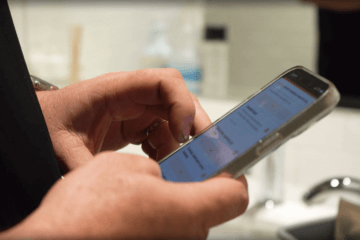Return-to-work plans lay out the procedures and policies you’ve put in place to make sure your employees can return to work during the COVID-19 pandemic with as much safety as possible.
Cleaning teams need two kinds of return-to-work plans in place: one for their client or organization, the other for themselves.
Of course, depending on where you live and the industry you work in, you may be opening back up . . . or closing back down . . . or opening back up again after closing back down . . . or maybe you’ve been full throttle this whole time.
Components of a return-to-work plan
It’s likely that your local government has issued guidelines to help create a return-to-work plan. For example, within the United States, OSHA’s Guidance on Returning to Work document is essential reading. The CDC also offers guidance on re-opening buildings after a shut-down. For other resources, the U.S. Department of Labor’s coronavirus resources page includes documents relating to wages, hours, and leave in addition to safety.
If you have a legal team or contact, they’ll also likely be involved in ensuring the plan is written with maximum safety in mind and to minimize potential liability.
Once you’ve reviewed those recommendations, think through the following considerations specifically for janitorial, cleaning, and maintenance workers:
New workloading requirements
You’ll need to account for the impact of COVID-19 on your workloading estimates. Be sure to consider:
- New responsibilities, such as increased cleaning and regular disinfection of high-touch surfaces.
- The dwell time your disinfectant requires to be effective against the novel coronavirus.
- Additional time needed for properly putting on and removing PPE.
- Additional time needed for sanitizing cleaning equipment between uses.
- Social distancing requirements that may reduce the number of employees in a crew.
Share these new requirements with your client or organization. They can share it with people who will be using the facilities for greater transparency about the steps being taken to keep them safe.
Supplies and resources
Review your cleaning supplies, equipment, PPE, and other resources to ensure that your cleaners have everything you need to follow through on your plan. If they need to be changing gloves frequently, for example, then ensure their carts or kits are stocked with enough gloves.
Additionally, you’ll need to account for the additional wear-and-tear on your equipment, as well as any changes in the amount of cleaning products.
Quality tracking and transparency
Outline any changes you’re making to the quality control process in your return-to-work plan. These might include:
- Efficacy measurements, such as ATP or particulate counters.
- Process compliance audits around disinfection, handwashing, or proper use of PPE.
- Increased frequency of your regular inspections.
Even if your clients or stakeholders haven’t previously wanted to be looped in on quality control results, they may now. Sending over regular reports helps boost everyone’s confidence in the cleaning process.
Clear plan for health and wellness
Don’t wait until there’s a confirmed case, an employee with a close contact, or a COVID-19 outbreak to think about what you’re going to do. Make a clear plan — and communicate it.
If you have made changes around sick pay, time off, etc. in light of COVID-19, be sure your staff feels empowered to take advantage of those benefits. This reduces the risk that an unwell employee will come into work anyway.
Additionally, be sure your staff knows that you will communicate risk to them in the event that you are cleaning a space that has confirmed cases of COVID-19. Build that trust.
Training your team
You can have the best plan in the world, but it’s your cleaners who need to be able to carry it out. Train, train, re-train, observe, and train some more!
Need some inspiration for great training? Check out how UMN trains student inspectors for a five-step process any team can use. Kathy Patton’s tips for rolling out new technology to your team is also great reference for ensuring successful adoption of new processes.
Training should be part of the return-to-work plan itself. Prioritize training with the time and resources needed to do it right.
Communicating your plan
Externally, you’ll want to share the parts of your plan that focus on quality control, disinfection, and safety within the building.
If you work as part of an in-house team for a university or other organization, you may have already been at the table to help form the reopening plan for your entire organization — and that’s great!
If, on the other hand, you work with commercial accounts, be sure to share the plan and highlight the points they can use to share with their own customers, residents, or staff. Our article on great communication during COVID-19 is a good place to to start!
Within your team, make sure the plan is communicated at every level of your team. You really can’t over-communicate. Emails, signage, meetings, phone calls, one-on-one check-ins, and more can all help.
Does your team have a return-to-work plan? Are you contributing to the plan for your larger organization? Let us know what’s working for you!



